- Home
- Rear end paralysis care: diet
Rear End Paralysis Care: Diet
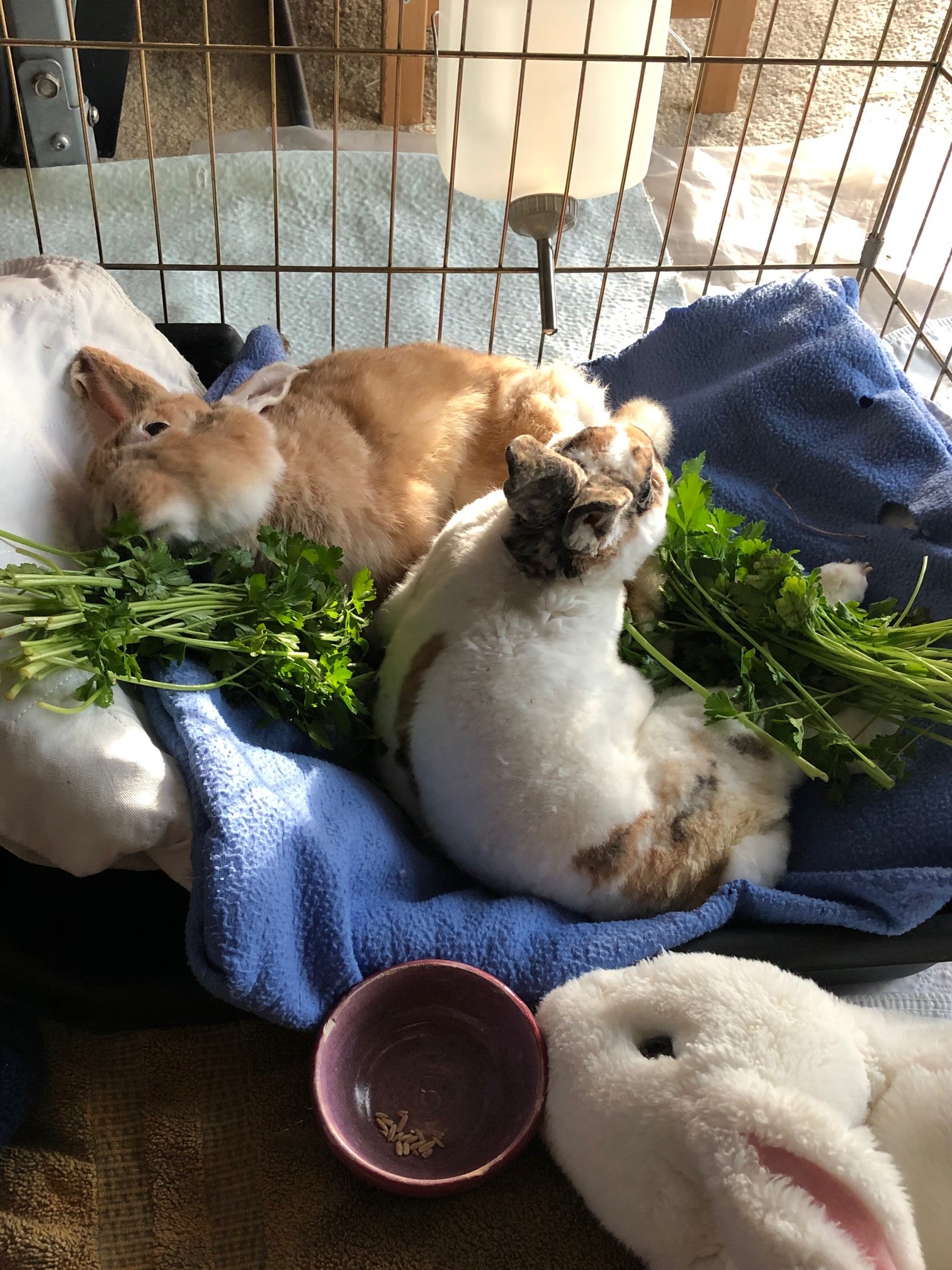 Poppy and Roxanne enjoying breakfast in bed.
Poppy and Roxanne enjoying breakfast in bed.Key Points:
- A rabbit's diet is 80% hay, 15% fresh greens and 5% pellets and treats.
- Senior and disabled bunnies can drop weight quickly. If it is an issue of pain, stress or lack of food, these things must be addressed.
- Re-evaluate how well your bunny can access his food and water. If he is having trouble, you need to make some changes.
- Increase your bunny's food intake by giving him foods high in fiber, protein and fats.
- A water bottle may need to be introduced. Other methods of hydration include administering sub-q fluids and syringe-feeding water.
What's on the Menu?
An important part of rear end paralysis care involves diet. You need to be aware that a disabled bunny's eating habits may change, especially as they grow older. Generally speaking, a rabbit's diet should be high in fiber and low in sugars, which means about 80% of the diet should be hay, 15% should be fresh vegetables and 5% should be pellets and treats.
In my experience, however, older rabbits tend to become less interested in hay (also less interested in using the litter box). Even if they were good hay eaters in the past, I wouldn't see them eating as much hay after they reached the age of 11 years or older. This was especially true if they had health issues.
Does Immobility Cause Weight Loss?
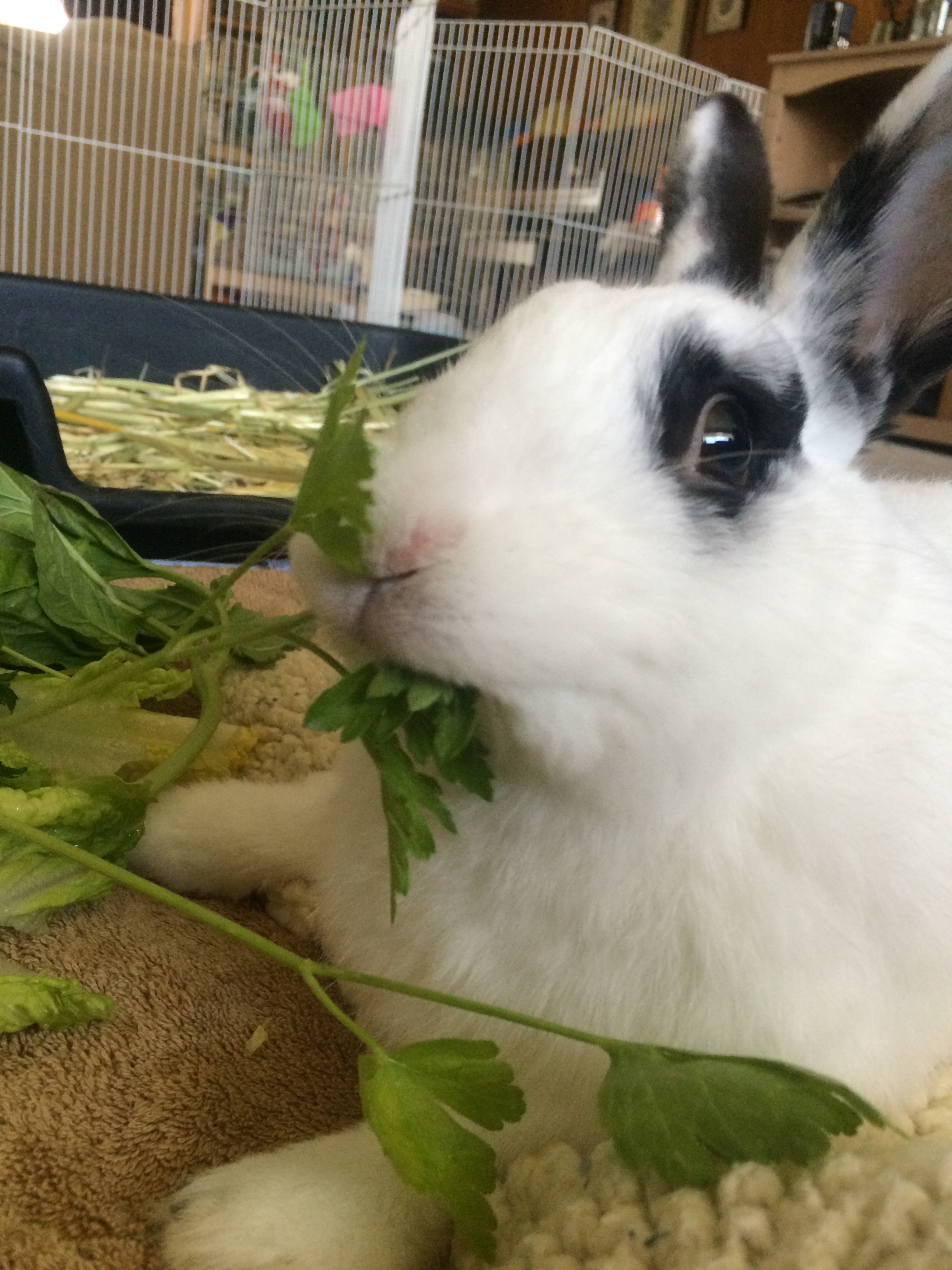 Diamond always enjoyed his parsley.
Diamond always enjoyed his parsley.There are a number of reasons why rabbits may lose weight. It's important to realize that slowing down or reversing weight loss cannot always be solved with just offering more food. The underlying problem needs to be addressed first. Weight loss can result from the following:
- Stress (caused by noisy or new surroundings).
- Lack of food (due to bond-mate eating the majority of what is offered).
- Pain (caused by dental, liver, kidney, gastrointestinal, heart or musculoskeletal disease, infections or cancer).
- Muscle loss (usually an issue for senior bunnies and those bunnies experiencing rear end paralysis).
- General aging (the body slows down, food doesn't taste the same, nutrients are not absorbed as well, bunny spends more time sleeping, etc.).
Since there may be several reasons for weight loss, it is important to speak to your vet first to make sure your bunny receives the necessary care.
 Not all bunnies play nice at dinnertime.
Not all bunnies play nice at dinnertime. Unikyluckk|Shuttershock.com
Rear end paralysis bunnies are usually dealing with pain from their condition. Whether the cause is from arthritis, spondylosis, E. cuniculi, spinal compression or fracture, adequate pain management is a priority. Your vet may prescribe meloxicam (brand name Metacam®), which is a NSAID (like ibuprofen for humans). Metacam is great for reducing inflammation caused by arthritis and dulling pain in joints. Another helpful medication is gabapentin, which is used to eliminate nerve pain, which is typical in spinal compressions and spondylosis. The medication can cause drowsiness, so make sure your bunny still eats when on this medication. For moderate to severe pain, opioids such as Tramadol, butorphanol and buprenorphine may also be prescribed, especially if Metacam is not advised due to kidney issues. Opioids can also cause your bunny to sleep more than usual. Adequan is an injectable drug that eases arthritis pain and stimulates joint cartilage repair. This medication can also be helpful for your bunny.
Your vet may start out with Metacam and either change dosing or add medications based on your bunny's level of pain and other health issues.
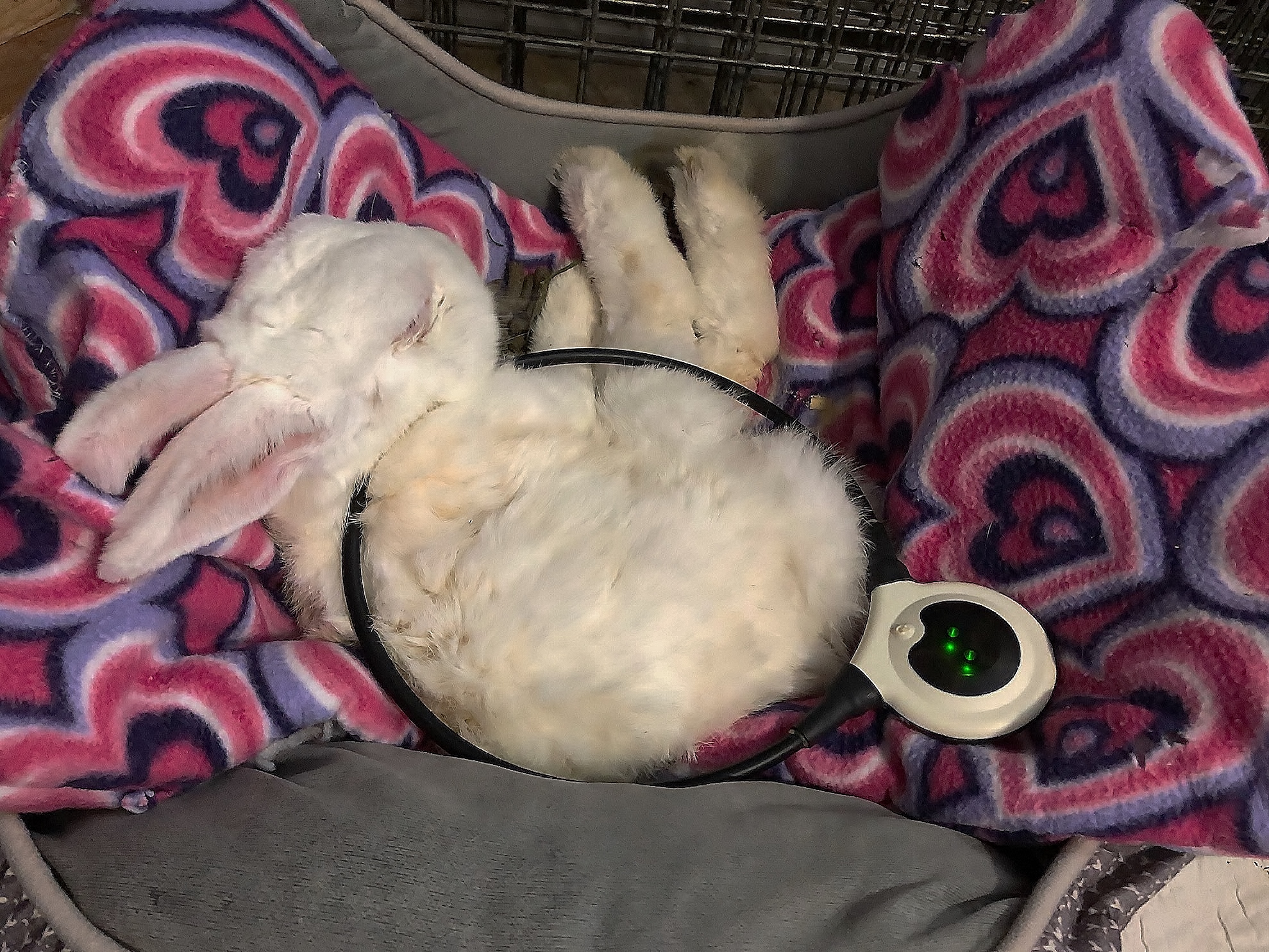 Eddie snoozing while using his Assisi Loop. The Assisi Loop is effective in reducing pain from arthritis, spondolysis, muscle aches and spasms.
Eddie snoozing while using his Assisi Loop. The Assisi Loop is effective in reducing pain from arthritis, spondolysis, muscle aches and spasms.Other methods to reduce pain may include physical and massage therapy. Your vet may suggest using a heating pad (or a cold pack) on your bunny's back. Cold laser therapy and acupuncture can also be beneficial, although it may be difficult for you to tell how helpful it really is by just observing your bunny afterwards. Another drug-free alternative is using an Assisi Loop, which uses Targeted Pulsed Electromagnetic Field technology to alleviate pain, ease muscle spasms and reduce inflammation. I have used an Assisi Loop myself and have found it to be helpful.
Joint supplements may or may not be helpful. Typically, the effectiveness in supplements is hard to judge once your bunny is completely immobile. Owners may see more positive results if their bunnies are at the stage where they need more assistance in moving around or getting into their litter boxes. Many rabbits respond well to Myristol, which is an excellent joint supplement that has a rabbit-specific formula.
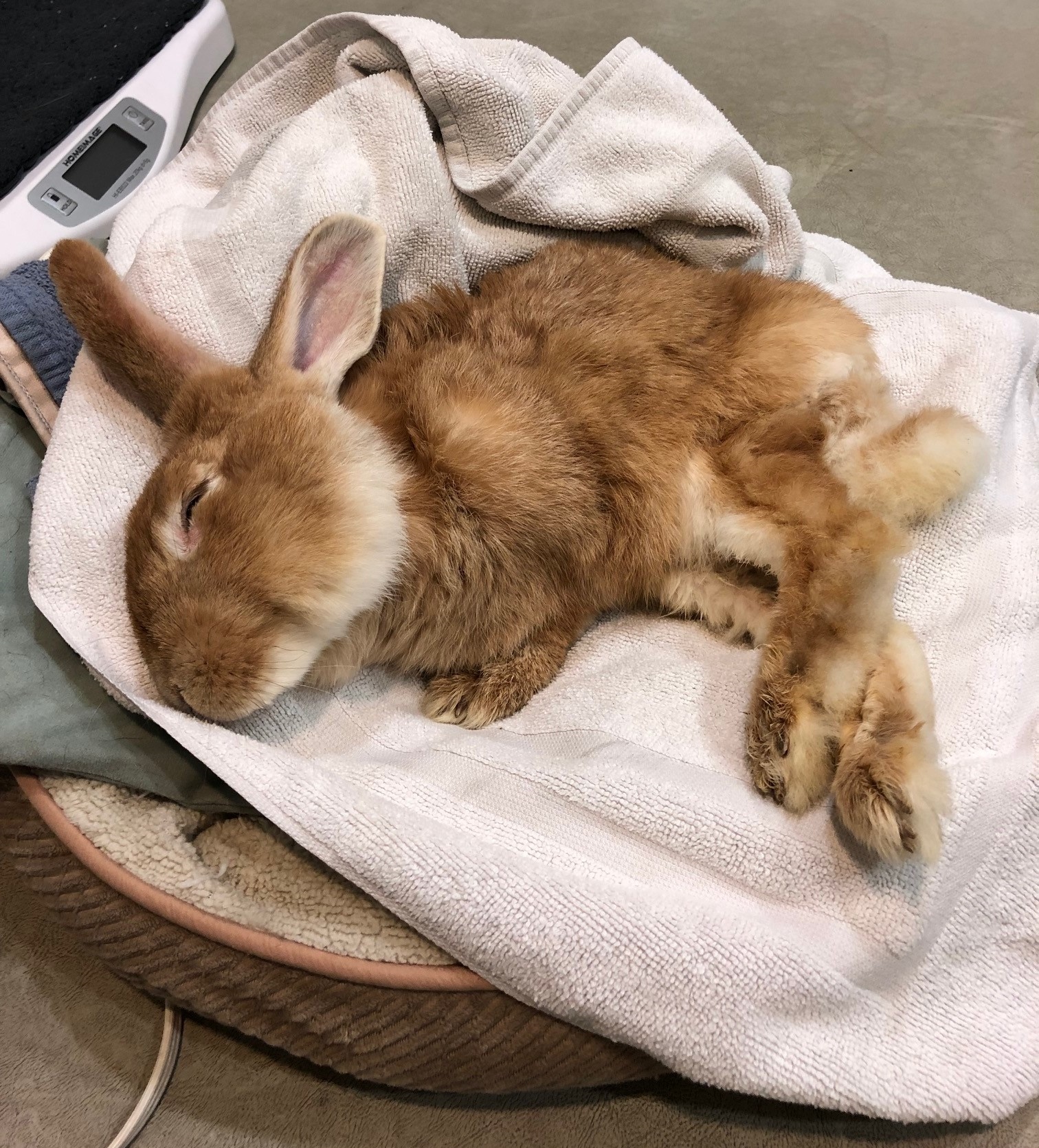 Poppy enjoying the heating pad during her physical therapy session at CARE.
Poppy enjoying the heating pad during her physical therapy session at CARE.Another part of pain management involves setting up the bunny's pen with his comfort in mind. More details on creating the best possible space for your disabled bun can be found in Rear End Paralysis Care: Setting up the Pen and Socialization.
Bunnies with rear end paralysis will experience a degree of muscle loss due to inactivity. You can slow down the atrophy with physical therapy exercises, but there still will be some loss over time. The more inactive your bunny is, the greater you'll notice a drop in weight.
Slowing Down the Weight Loss
 Roxanne, Poppy and Eddie in the middle of a food coma.
Roxanne, Poppy and Eddie in the middle of a food coma.When your bunny first becomes immobile (and especially if he is a senior), you may notice that his weight drops quickly, seemingly like a free fall. His weight will need to be stabilized quickly.
First, make sure your bunny can access his food and water. Can your bunny reach the hay? Do you need a low entry litter box or place the hay on the floor? Is the water bowl too deep to drink from, or does he need a water bottle? Your observations will determine what needs to be changed in your bunny's pen.
Even if you do not see your bunny eat hay, make sure he always has access to quality grass hay. To add more interest, offer a variety of different hays. Many rabbits enjoy oat hay (or a blended mix with oat hay included), because of the seed heads. You can sprinkle in dried flowers or herbs, or even some alfalfa hay. Be aware that if your bunny has bladder sludge or any other health issues effecting the kidneys, alfalfa is not a good idea.
Increasing the amount of pellets fed out may be necessary. You can either have a dish full of pellets out all day or feed out a handful several times a day (which may be better if your bunny lives with younger, healthier and more active rabbits).
A Word About Pellets
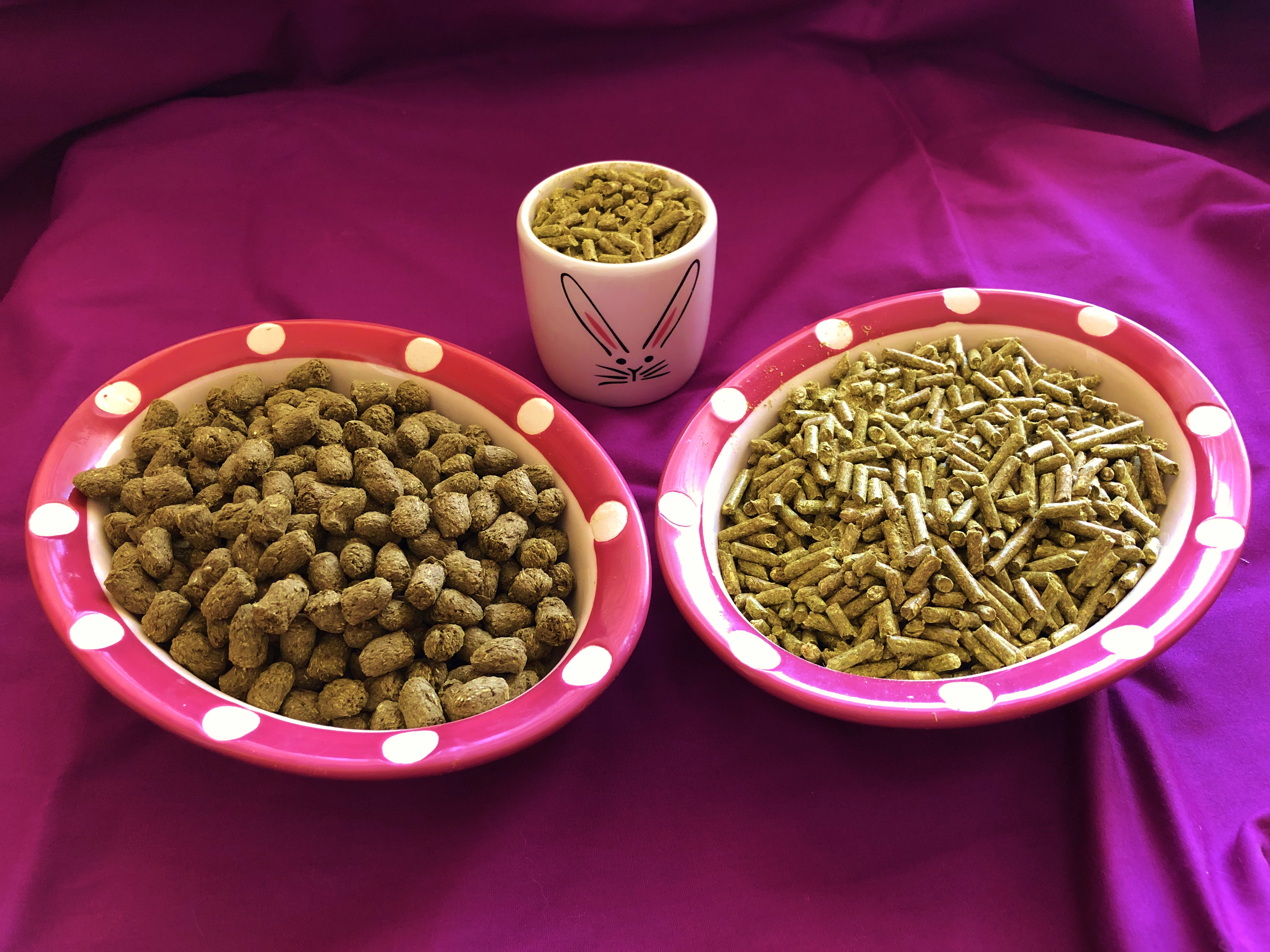 Supreme Selective extruded pellets (left), Oxbow adult compressed pellets (right).
Supreme Selective extruded pellets (left), Oxbow adult compressed pellets (right).Oxbow adult timothy pellets has long been a part of my rabbits' nutrition. However, in the past year or so, I have moved away from feeding out compressed pellets for my disabled bunnies. In the past, I've had two rear end paralysis bunnies choke on pellets. One I was able to save, and the other I was not. It was a traumatizing experience.
I believe the compressed pellets are just a bit too small and pose more of a choking risk for bunnies, who may not be in a good body position (ie, not standing on all four feet).
I still use the regular Oxbow pellets when I put together my pellet mush, but I will not use it if I'm just feeding out the hard pellets by themselves. Instead, I use the extruded pellets by Supreme Selective. Since the pellets are extruded, they are bigger so a bunny has to chew more thoroughly before swallowing. This does not completely eliminate the possibility of choking, but I do think it reduces the risk.
Bending the Rules
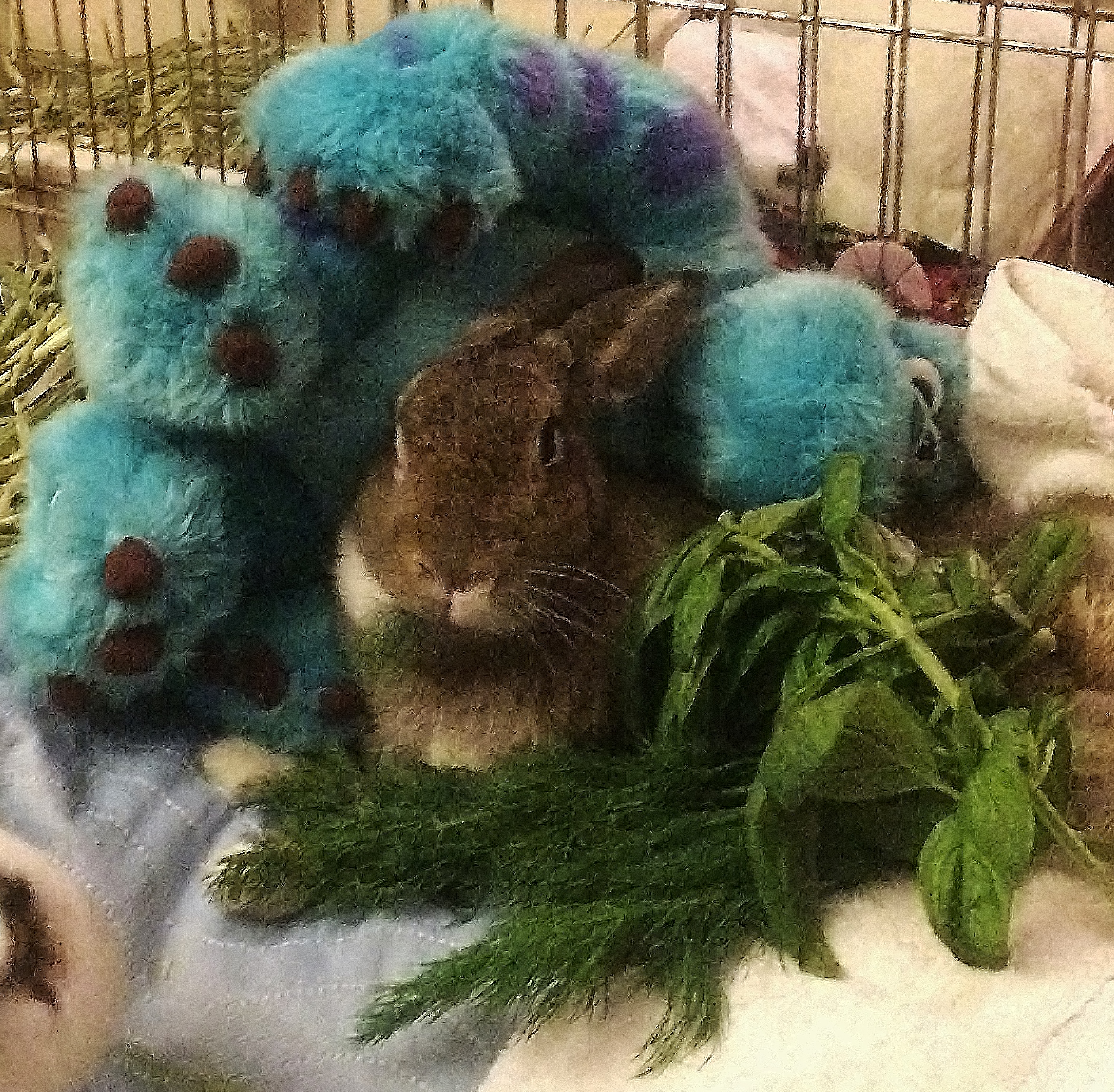 Petra was never out of favorite foods.
Petra was never out of favorite foods.A bunny losing weight with rear end paralysis can drop 1/3 of his weight within a month. Increasing the calories often means giving pellets, treats and other foods more frequently than you would with a normal adult bunny. This is fine, because you want to stabilize your bunny's weight. However, be sure to still provide plenty of hay, veggies and fresh water.
Be aware that sometimes seniors may lose interest in certain foods as their sense of smell and taste buds don't work as well as they did when they were younger. You may need to move away from lettuce and focus more on herbs as they have a stronger aroma. Cilantro, basil, oregano, thyme, dill, mint, parsley and rosemary are all good choices to peak a bunny's interest.
Increase the Calories
- Supplemental feedings. Critical Care® from Oxbow is the most widely available recovery food. It is a powdered food that is meant to be mixed with water and syringe-fed to sick rabbits or those bunnies in post-op care. It comes in Original (anise-flavor), Apple-Banana flavor and Fine Grind (meant for nasogastric tubes. I will use this for just regular syringe feeding because it is easier to use).
You can syringe feed your bunny, but if your bunny is willing, you can mix a spoonful of the powder with some canned pumpkin (just straight pumpkin, not the pie filling), apple sauce or fruit baby food (such as banana, apple or a mixed berry). The Critical Care provides the fiber, while the fruit (or pumpkin) provides palatablity and the extra calories. If you are not sure if your bunny likes pumpkin, you can purchase a jar of pumpkin baby food. That way if your rabbit doesn't like it, you don't waste a whole can.
There are other brands of recovery food on the market, such as Science Selective Recovery and Sherwood Pet Health's SARx. I like to use Lafeber's EmerAid Herbivore Recovery food. Some rabbits like the taste of it better than the Critical Care, and it doesn't clump so much in the syringe. - Oats and Oatmeal. Some baby food may come with oatmeal (do not use the baby food that may have yogurt). I will still use this variety in my mix since it comes with oats, which provides extra protein and fiber. You can make your bunny oatmeal too. Don't use the instant packages in which you just add hot water. Those instant packages have too much added sugar. Get the oatmeal with no added sugar that you need to cook on the stove. You can use either steel-cut or rolled oat varieties.
Once you let it cool enough, you can mix with Critical Care and some pumpkin and serve. Increasing the amount of oat groats (which are the unprocessed oats) you give out will always be a big hit with the bunnies. - Protein Powder. You can use soy protein powder to mix with Critical Care (to provide that all important fiber) and syringe feed. A good choice is Bob's Red Mill Soy Protein Powder, because it is unsweetened, unflavored and dairy-free. If you are looking in your pantry and wondering if the protein powder you use in the morning is good for your bunny, make sure it's vegan (meaning no dairy or other animal products), unflavored and unsweetened.
- Seeds and Nuts. These are excellent sources of fat and protein. In small portions, they are beneficial. All seeds and nuts should be unsalted and raw. To learn more, click here.
- Calf-Manna®. The company, Mannapro, produces a supplement pellet that increases protein and growth. It's meant for lactating moms and improving the fur quality for show rabbits. However, it is also helpful for seniors maintaining their weight. You can sprinkle some of these pellets on top of the regular ones you feed out or add them in a pellet mush. There is a rabbit-specific formula, but you can also use the multi-species package as that includes rabbits as well.
- Pellet Mush. Mush is my favorite food to give to an underweight rabbit. Simply, it's regular Oxbow adult pellets, which is soaked in water. The pellets break apart in the water. I will then add baby food and a whole very ripe banana. All the ingredients are mixed very well in a bowl. The bunny receives a spoonful once or twice a day. Refrigerate the rest. Most of the time, rabbits will eat it cold from the fridge, but sometimes there is a rabbit who wants his mush at room temperature or slightly warmer. You can microwave it for a few seconds to remove the chill before serving.
The recipe can be switched up as one sees fit. You can swap out the baby food for apple sauce or canned pumpkin (if your bunny likes that). Calf-Manna can be added along with the pellets to give extra protein. You can put in a splash of apple juice along with the water. The mush can dry out by the next day, so you can add more water or juice to moisten it. A spoonful of Critical Care increases the fiber content. Oatmeal can also be added. See what your bunny likes best. Be aware that your rabbit may not like the mush right away. You may need to offer it 2-3 times before they decide to accept it.
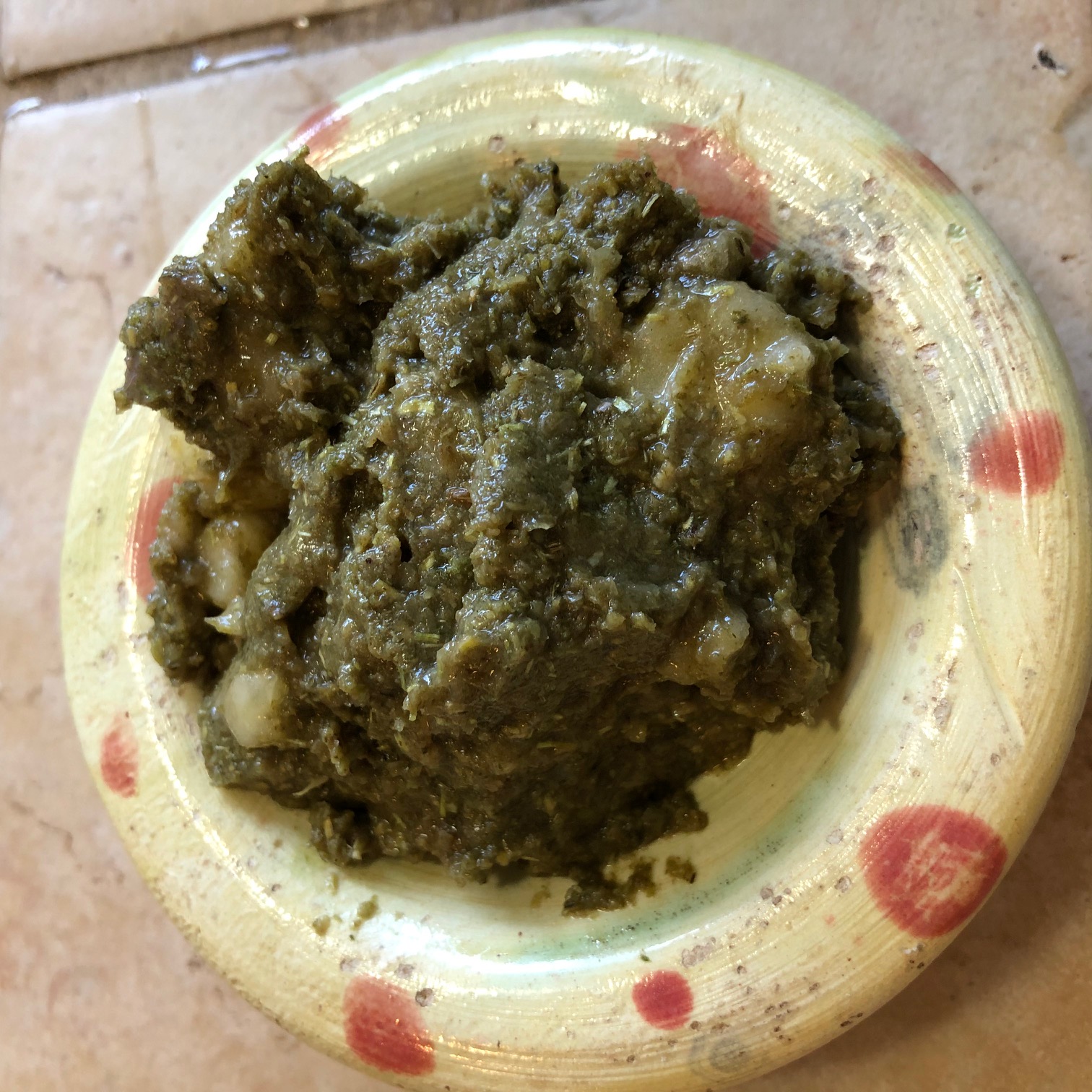 Pellet mush made with Oxbow adult pellets, baby food and a banana.
Pellet mush made with Oxbow adult pellets, baby food and a banana.What Goes In, Must Come Out
I know what you must be thinking, "With all the extra pellets and baby food and a whole banana, won't that upset the rabbit's delicate digestive tract?" Well, yes and no. Typically your rabbit may produce more soft poop with the change in diet. This is not unusual, especially in the first couple of weeks. However, in my experience, their system adjusts and their body handles the extra calories just fine.
However, it is important to make sure they still have easy access to fresh hay as well. The fiber is so important for them. If your bunny is no longer interested in hay (or he has dental issues), make sure you use a high quality pellet and you mix in a supplemental food that has high fiber along in the mush. The high fiber will make sure the body will work as well as it can.
Dishes
What you use for dishes is going to be very important, since your disabled rabbit will not be able to easily adjust himself to access the food better. Generally speaking, you will want a small bowl or plate in which the edges of the dish gradually slope out. This is to better accommodate the bunny as he is pushing the mush or oatmeal to the side of the dish and licking the food up. The base of the bowl can be slightly raised (approximately 1/2 inch). A raised base is good if your bunny spends a lot of time sitting up. You may still need to provide a suitable platform.
Some bunnies may spend a great deal of time on their side (or they may sit up at the beginning of the meal and slide down to their side). In this case you do want to use a plate.
 This is a dog bowl, which I have used as a water bowl for some of my bunnies. However, the edge is 3" high which makes this totally unsuitable for a rear end paralysis bunny. This is a dog bowl, which I have used as a water bowl for some of my bunnies. However, the edge is 3" high which makes this totally unsuitable for a rear end paralysis bunny. |
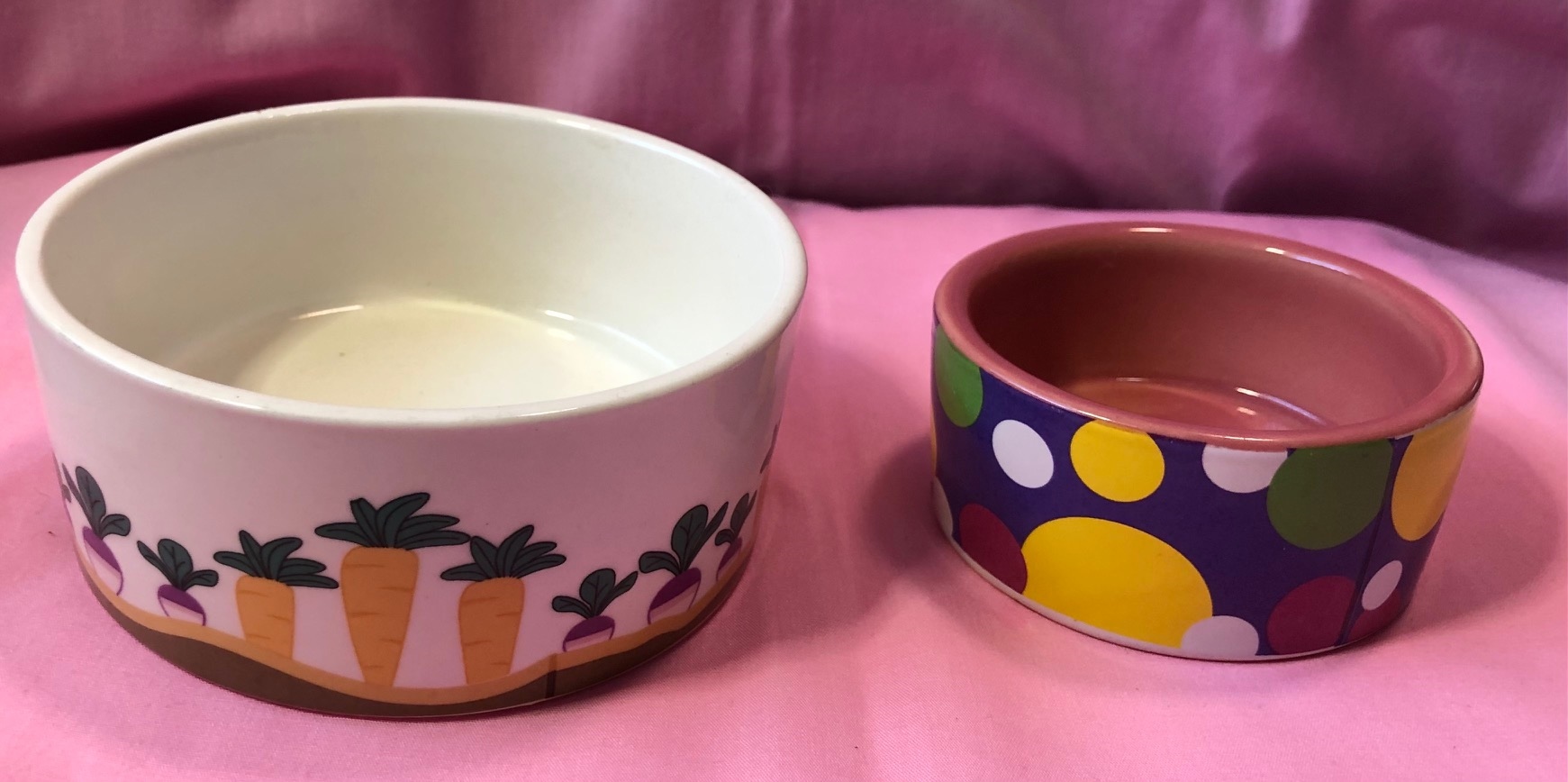 These are bowls commonly found in the small animal aisle at a pet store. They may work for a regular bunny, but not a disabled rabbit. The edges are about 1.5" inches, but not sloped. The bowl itself is not so wide where a bunny can angle his head in to reach his food better. These are bowls commonly found in the small animal aisle at a pet store. They may work for a regular bunny, but not a disabled rabbit. The edges are about 1.5" inches, but not sloped. The bowl itself is not so wide where a bunny can angle his head in to reach his food better. |
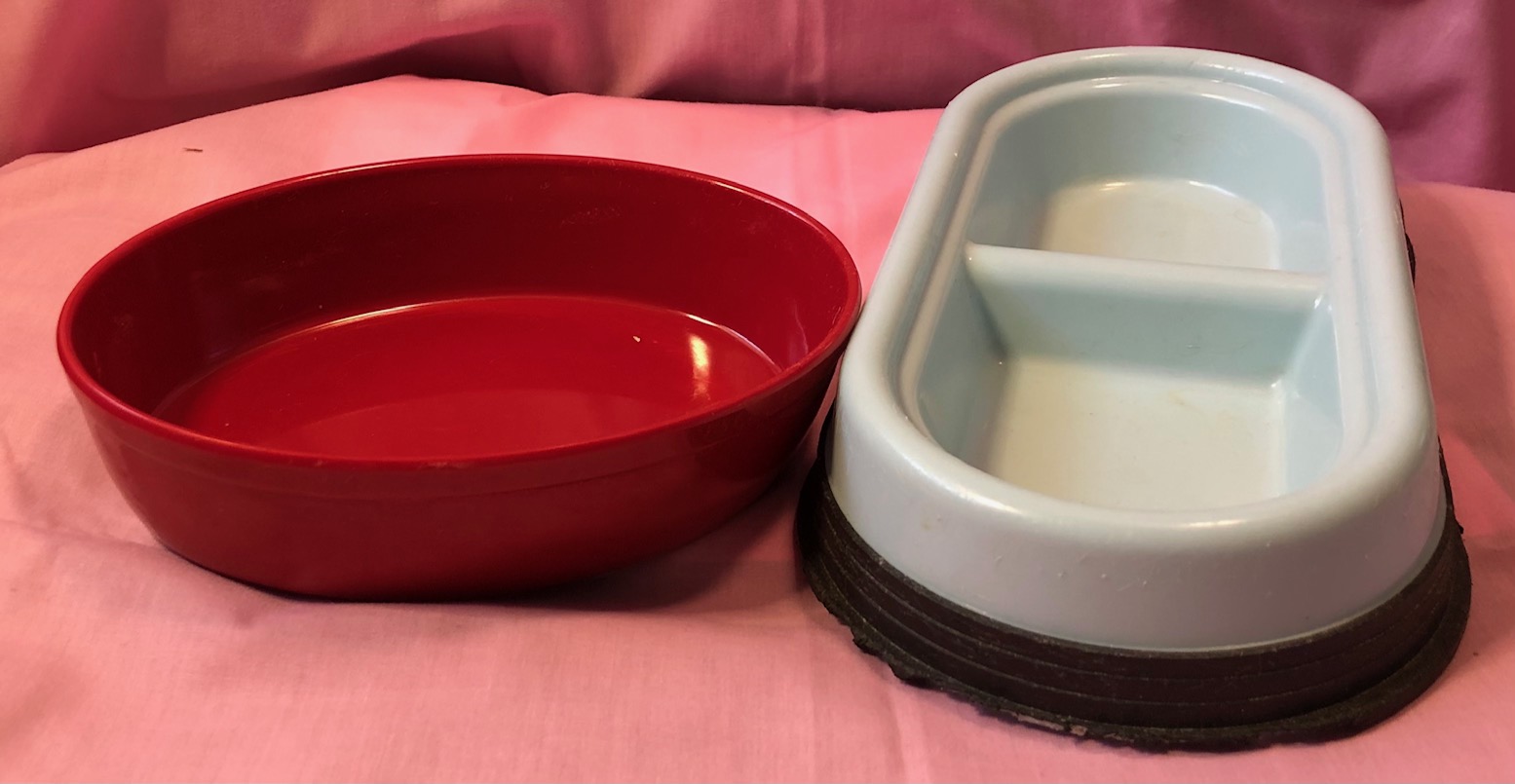 These are bowls which you might find in the cat aisle of a pet store. The edges are approximately 2" inches high but not sloped, which may be suitable for some disabled bunnies, but not all. These are bowls which you might find in the cat aisle of a pet store. The edges are approximately 2" inches high but not sloped, which may be suitable for some disabled bunnies, but not all. |
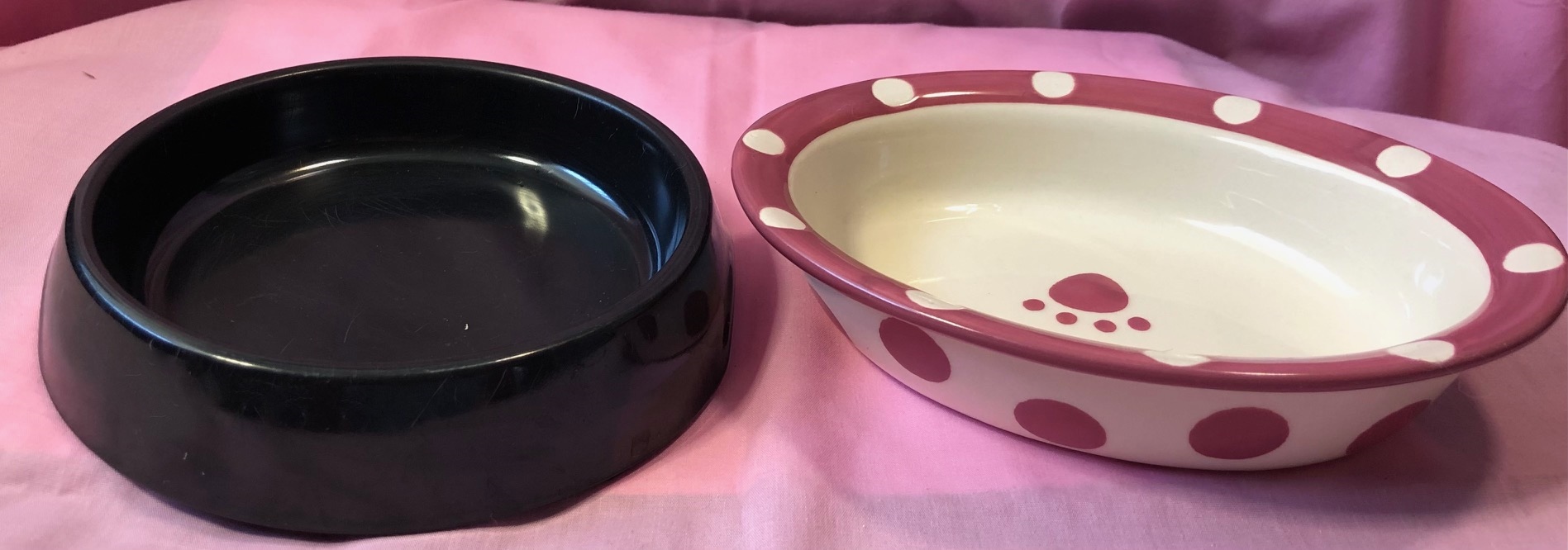 These are another two cat bowls. The black one is a base that comes with a glass insert (which I didn't buy). The edges of both bowls is about 1.5" high, but the dish is wide and shallow. This is why I like using cat dishes for disabled bunnies. These are another two cat bowls. The black one is a base that comes with a glass insert (which I didn't buy). The edges of both bowls is about 1.5" high, but the dish is wide and shallow. This is why I like using cat dishes for disabled bunnies. |
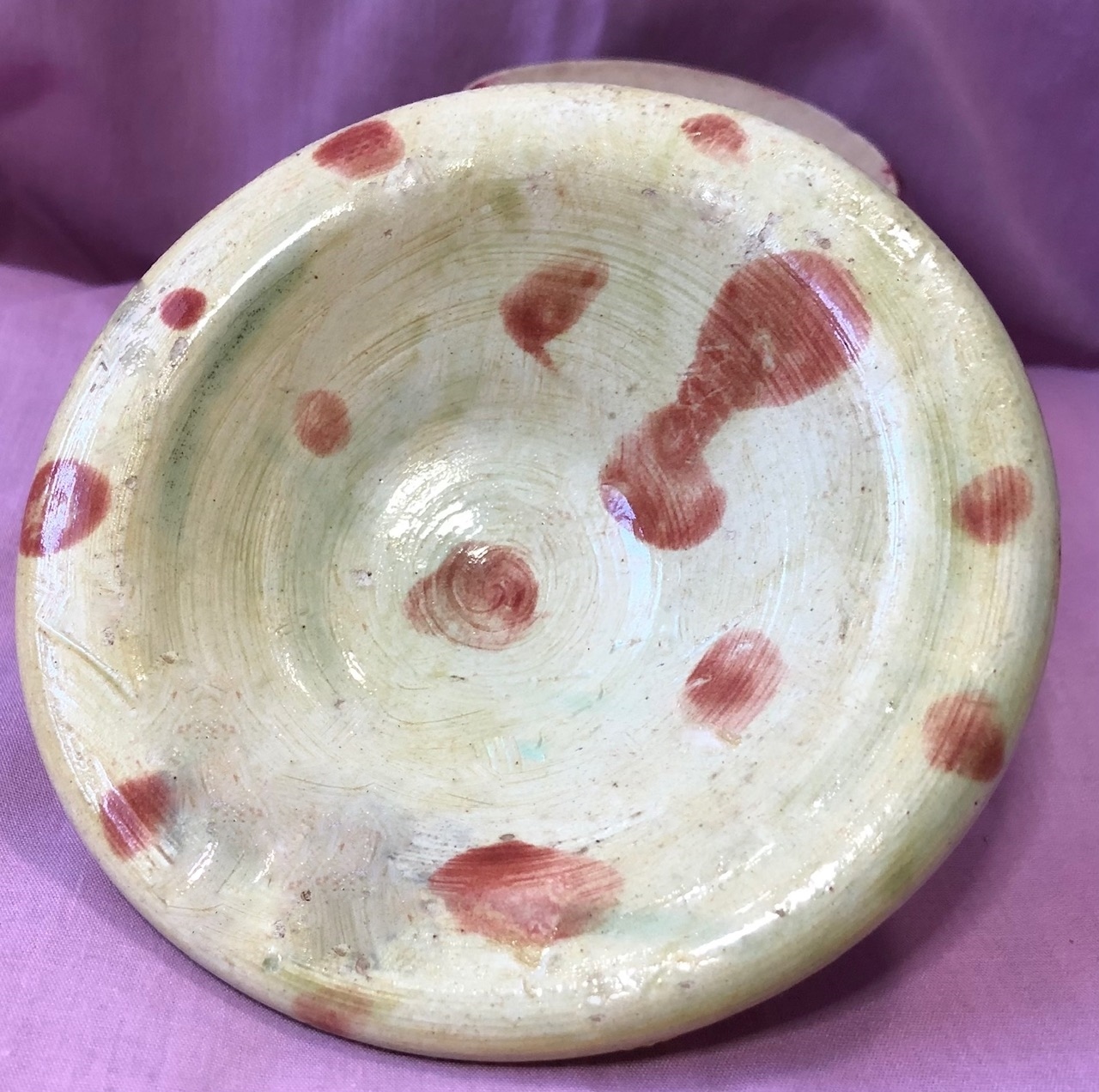 This is actually a homemade bowl I received from a friend. It was specifically made for a disabled bunny. The dish is about 1" high, the edges are sloped, the bowl is shallow and the base is slightly raised (not shown). This is actually a homemade bowl I received from a friend. It was specifically made for a disabled bunny. The dish is about 1" high, the edges are sloped, the bowl is shallow and the base is slightly raised (not shown). |
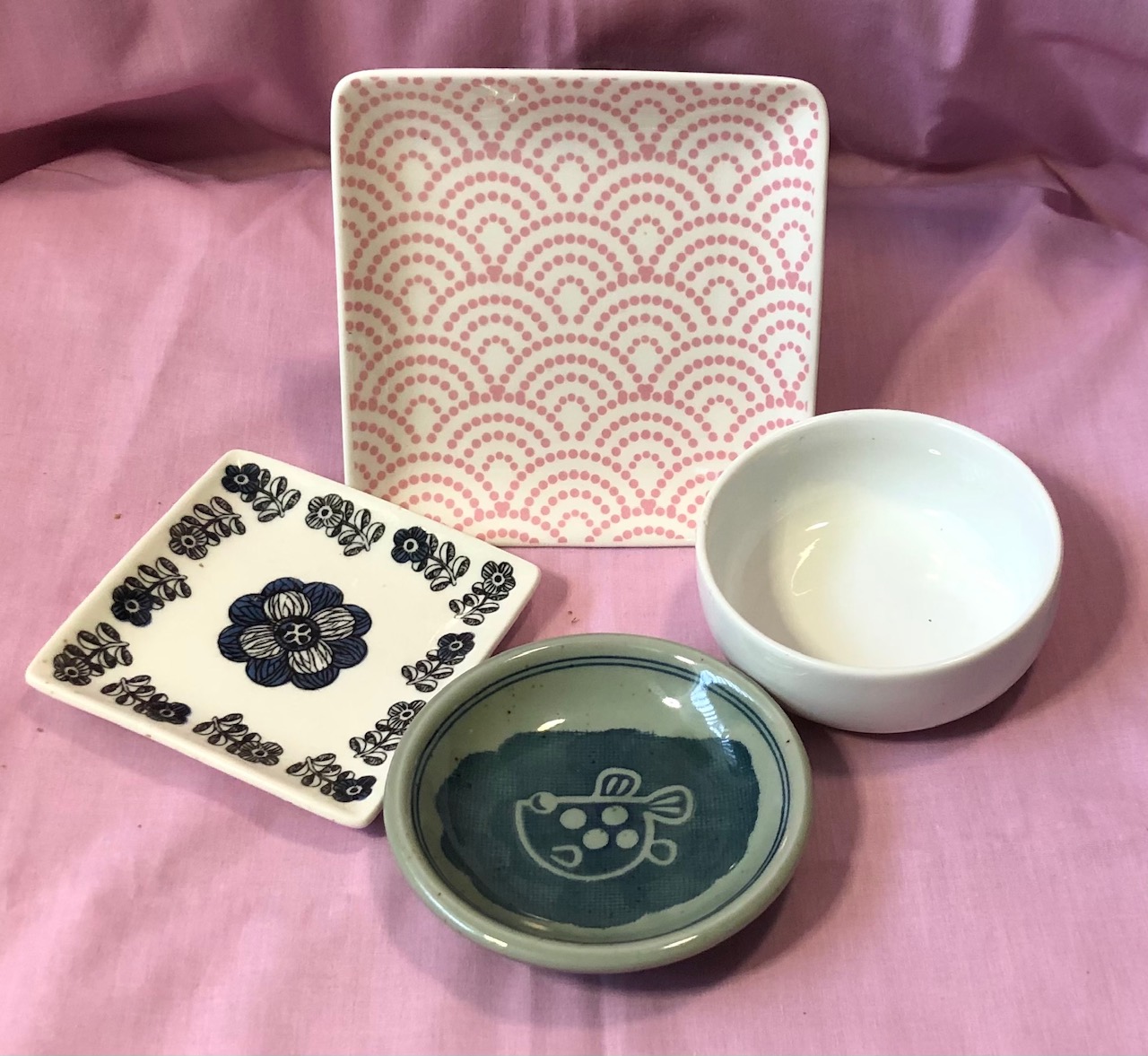 Sometimes you can use small bowls used for condiments. My favorite is Japanese soy sauce dishes typically used for sushi. You can get either a plate or bowl. They are perfect for a bunny who is on his side. Sometimes you can use small bowls used for condiments. My favorite is Japanese soy sauce dishes typically used for sushi. You can get either a plate or bowl. They are perfect for a bunny who is on his side.The larger plate in the back is good if you have two or more disabled bunnies. |
Water
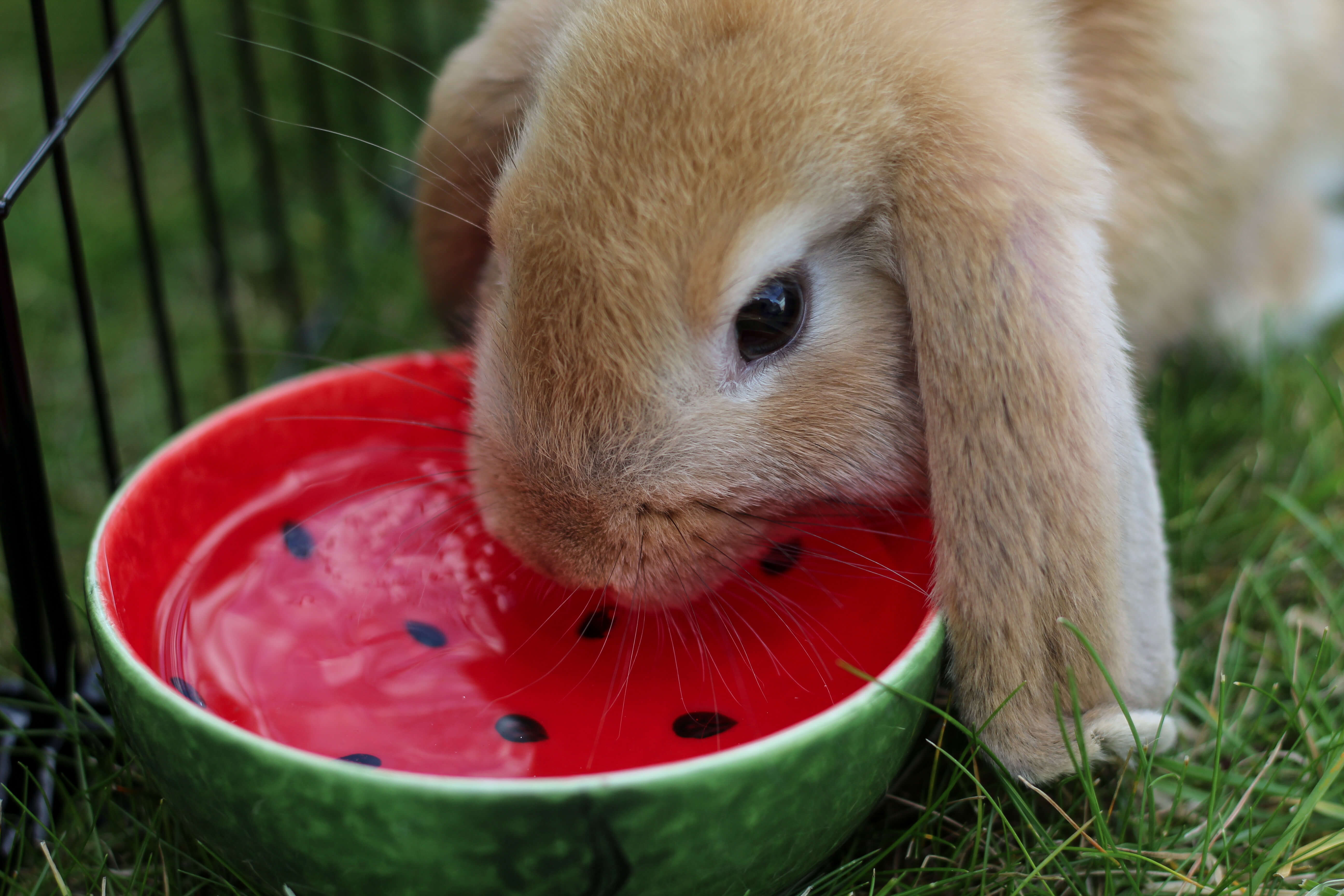 Photo by Marie Yang|Shuttershock.com
Photo by Marie Yang|Shuttershock.comRabbits require 50-100ml/kg of body weight per day (Harcourt-Brown 2001), which is more than several other species in comparison. However, it can be difficult to determine if your bunny is dehydrated just by looking at the water bowl. A large portion of water is consumed through leafy vegetables. Still, fresh water should be available to a bunny at all times.
Providing access to water for rear end paralysis rabbits can be tricky. Quite often they may stumble into the bowl or tip it over. If it is a very deep bowl, they may have difficulty leaning over the edge. You definitely do not want your bunny getting into a situation in which they cannot rescue themselves from the water dish.
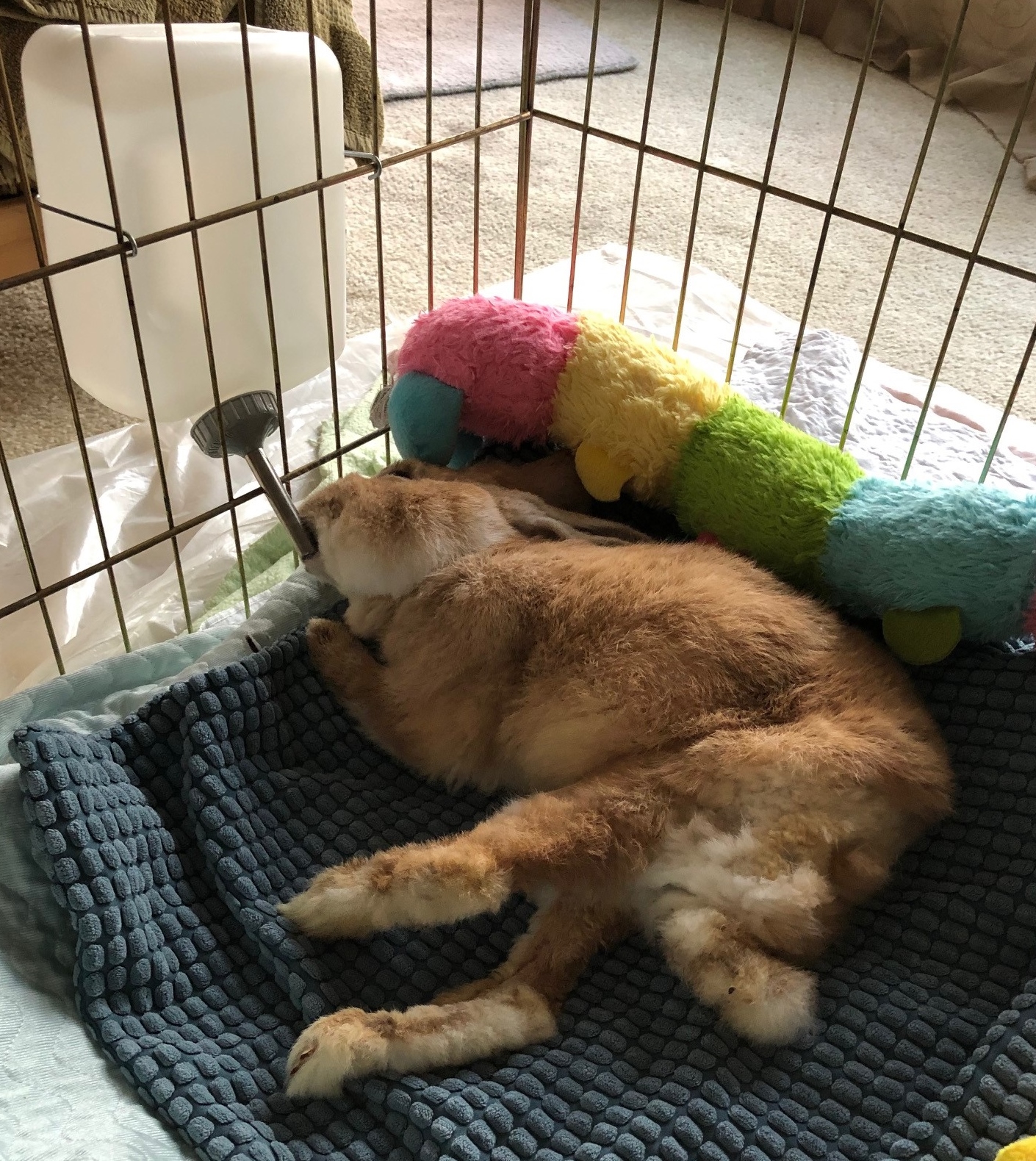 Poppy using her water bottle.
Poppy using her water bottle.Water bottles can be tricky because sometimes they sit too low or too high, and you need to make sure the bottle is clean and doesn't leak.
Water bottles can be very helpful in providing access to water. The most difficult aspect is positioning the bottle correctly, so it is neither too low or too high for a disabled bunny to reach.
If the horizontal bars on the exercise pen (as shown in the picture on the left) are spread out too far, you can get a piece of hardware cloth where the mesh opening is big enough to slide the spout of the water bottle through. Use zip ties to fasten the hardware cloth to the pen, and then position the water bottle at the right height.
Check the bottle often. Sometimes they leak, but sometimes so much vacuum pressure is built up that no water will come out. Water bottles can be a good solution, especially when it gets hot. You can put ice cubes in the bottle to keep the water cool longer.
If you have been giving water bowls, your bunny may not be familiar with the water bottle. Show him where it is and what it does. I will normally set the bottle up close to the bunny and touch the tip of the spout with my finger until some water comes out and then touch the bunny's nose. Usually, they will catch on right away. However, some bunnies just will not drink from a bottle and you need to hydrate them other ways.
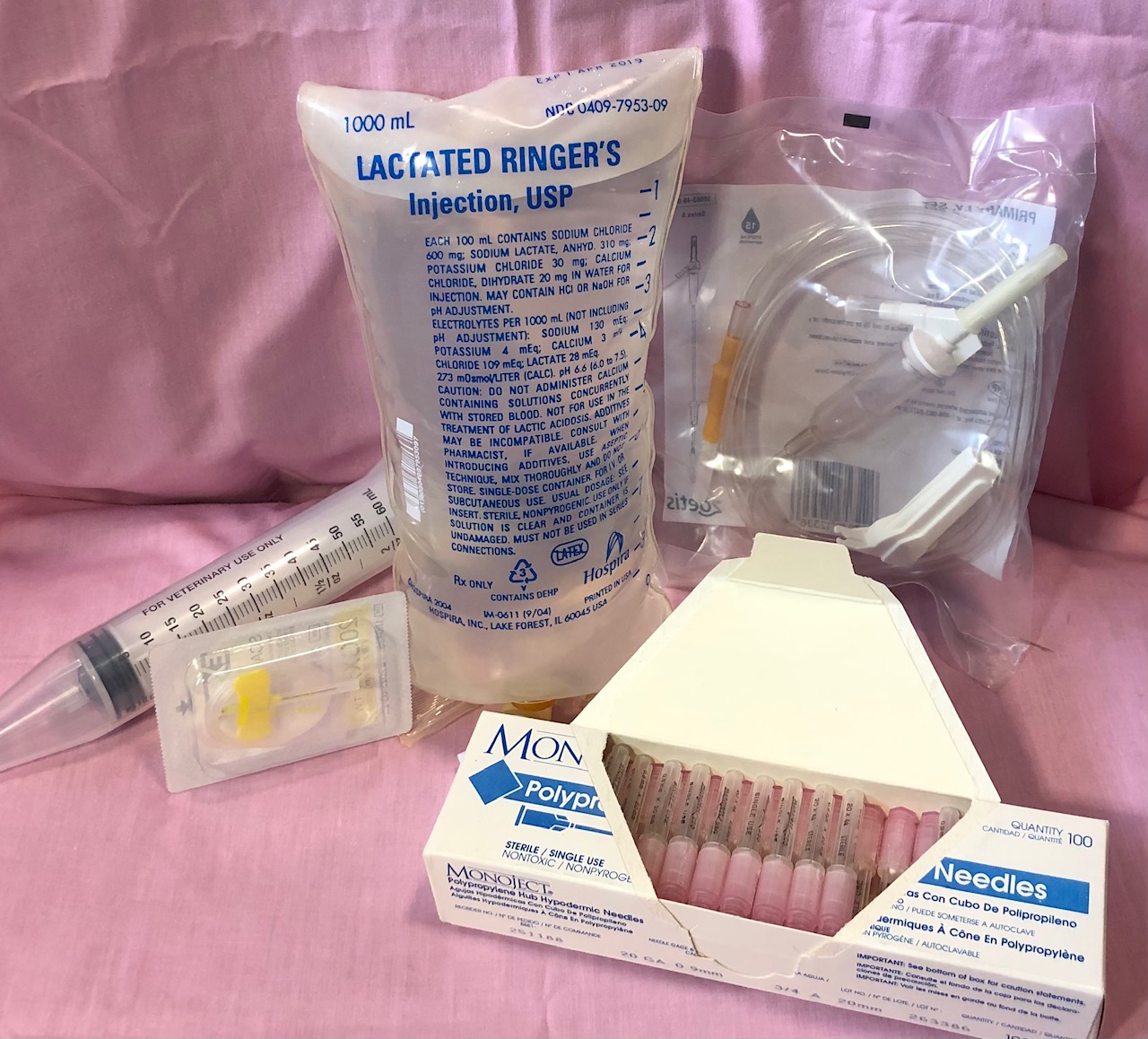 (Left to right) A 60 ml syringe with a 20 gauge butterfly needle, a 1L bag of Lactated Ringer Solution, port and a box of 20 gauge needles.
(Left to right) A 60 ml syringe with a 20 gauge butterfly needle, a 1L bag of Lactated Ringer Solution, port and a box of 20 gauge needles.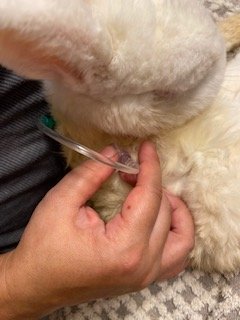 Eddie receiving some sub-q fluids.
Eddie receiving some sub-q fluids.If your vet determines that your bunny is dehydrated and would benefit from additional fluids being administered, you may be asked to give sub-q fluids at home. This means that you would be injecting fluids just under the skin in the shoulder area on the back. It is a simple procedure and it is a good way to make sure your bunny stays hydrated.
Lactated Ringer Solution (LRS) is a sterile solution composed of water, sodium chloride (salt), sodium lactate, potassium chloride and calcium chloride (Whitlock, 2020). In other words, it has electrolytes to help the body function normally. LRS is only available by prescription and your veterinarian or a member of the staff will show you how to properly administer the solution.
There are two different ways to administer fluids. The first is where you attach one end of the port to the bag of fluids, and on the other end of the port, you attach a needle which you insert into your bunny. The port itself controls the flow of fluid traveling from the bag into the bunny.
The other way is to draw up the amount of fluids you wish to inject first into the syringe, attach the butterfly needle and then inject the fluid into your bunny. The second method is more accurate and it is something I will do if I need to warm up the fluids first before injecting (usually applicable for a bunny in GI stasis with a low temperature). Most people have a preference based on what they are used to.
In Conclusion
A rear end paralysis bunny will drop weight very quickly, but addressing the weight loss takes more than feeding your bunny more treats. Speak to your vet and make sure there isn't a medical reason for the weight loss (such as a dental issue) and talk about pain management.
There are several ways to increase daily calories. However, make sure your bunny still gets enough fiber in his diet. Greens will help make sure your bunny is hydrated, but you may still need to syringe-feed water or administer sub-q fluids.
In time, this will all become very routine. There may be some minor changes you need to make here and there, so definitely do not worry about getting everything correct the first time. Your bunny's needs will change over time, so just stay observant.
Available Now!
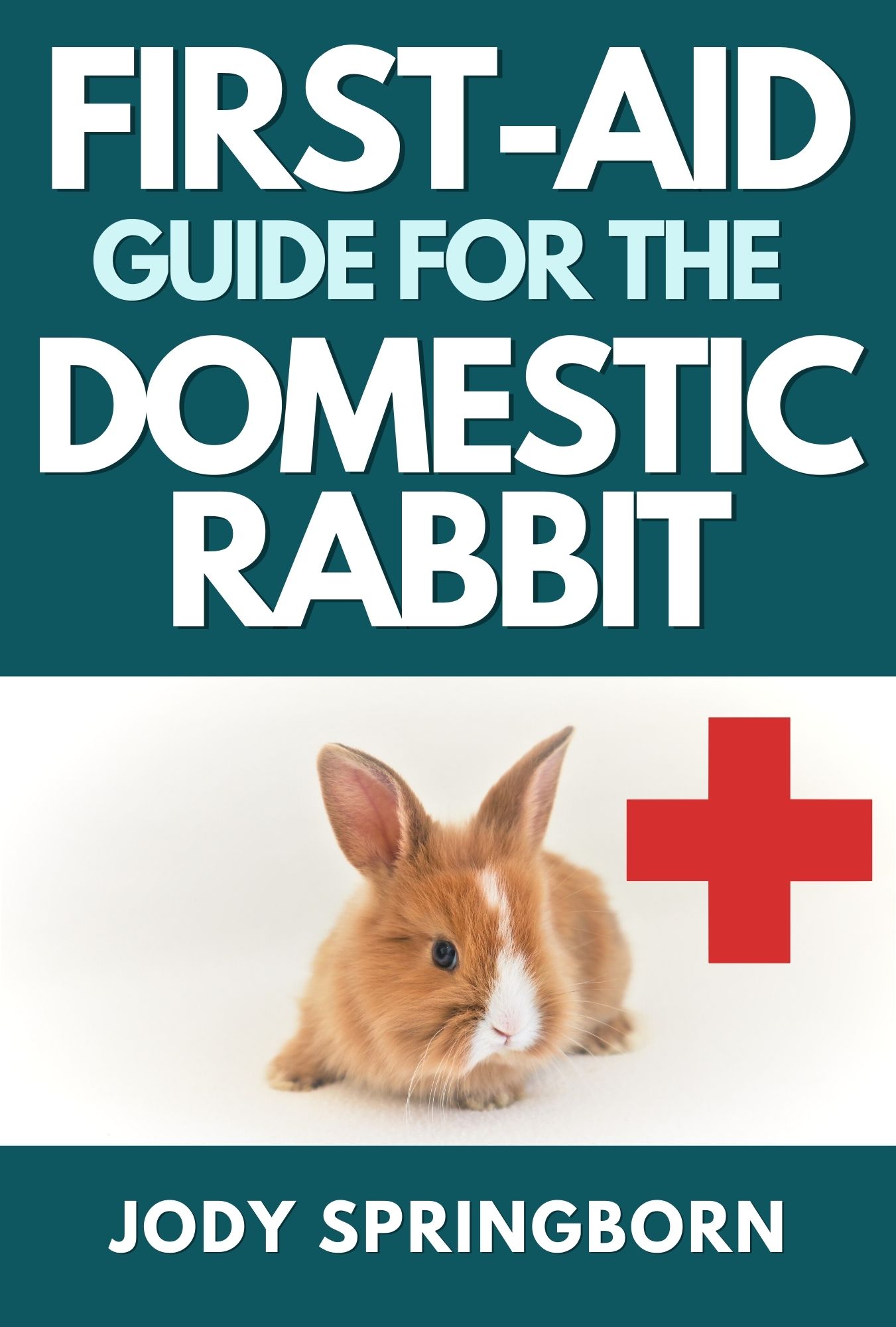
Often times, rabbit health issues require immediate attention. My First Aid Guide for the Domestic Rabbit will show you the most common health issues and teach you the basic skills you should have when your bunny needs you the most. There are over 100 color photos that show you all the supplies you need and how to help your rabbit in easy to follow step-by-step instructions.
The information presented is for educational purposes only and does not substitute veterinarian care. This information should not be used for diagnostic purposes, for treatment of an illness or injury and never should be substituted for veterinarian care by a licensed veterinary practitioner. The Educated Rabbit cannot be held responsible for the accuracy of the information contained, nor be held responsible for any action, based on information found in The Educated Rabbit.
Seek advice from your veterinary professional for any rabbit health issues and before administering any drugs!
Further Reading
Harcourt-Brown, Frances. 2002. Textbook of Rabbit Medicine. Oxford: Butterworth Heinemann 52
Mead, M., Brown, S., Chlebeček, T., Hutcheson, J. Overweight and Underweight Rabbits. House Rabbit Society 2013
Whitlock, J. What Is Lactated Ringer Solution? verywellhealth.com March 2020











